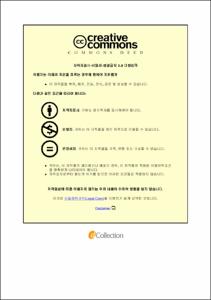물김의 생산 지역과 수확시기에 따른 주요 식품 성분 분석
- Abstract
- With increasing demand for the consumption and export of laver Pyropia spp. its production in domestic industry is increasing rapidly. The export of laver processing products reaches approximately 500 million dollars in 2018. In July 2017, the "Regional Standard for Laver Products" (proposed by Korea) was adopted as the Asian standard of the International Food Standards Committee (CODEX), which is involved in the foundation for the globalization of domestic laver processing industry. Currently, the raw laver is dried as a dried laver product and then mainly processed as a seasoned laver product in Korea. Most of the research focus on the processed products of dried as well as seasoned laver. However, research on raw laver is limited and no analysis has been conducted on the raw laver by region or production period. The object of this study is to analyze the difference of major food component of raw laver depending on harvest area or season. In the present study, it had collected raw laver from four regions Gangseo-gu (Busan), Seocheon-gun (Chungnam), Wando-gun (Jeonnam) and Goheung-gun (Jeonnam) in the month of December to March. The collected samples were analyzed for general components, trace elements, total phenolic compounds and antioxidant activity. Results showed that the raw laver contained large amount of amino acids, minerals, phenolic compounds and also has antioxidant activity. The average contents of general components and total phenolic compounds from the sample collected in December were found to be high. The crude protein content of raw laver is the highest in December and to decrease gradually from January to March. No significant correlation was found between antioxidant activity and total phenolic compound content in raw laver, indicating that instead of phenolic compounds, other substances affect the antioxidant activity. The results obtained from this study on nutrient components and antioxidant activity of raw laver were expected to provide basic data for the development of new laver processing product.
- Issued Date
- 2020
- Awarded Date
- 2020. 2
- Type
- Dissertation
- Publisher
- 부경대학교
- Affiliation
- 부경대학교 대학원
- Department
- 대학원 식품공학과
- Advisor
- 김영목
- Table Of Contents
- Ⅰ. 서 론 1
Ⅱ. 재료 및 방법 3
1. 실험 재료 3
1.1. 위·공판장 선정 및 샘플 채취 3
2. 실험 방법 4
2.1. 미생물학적 오염도 및 식품학적 성분 분석 4
2.1.1. 일반세균수, 대장균군 및 대장균 분석 4
2.1.2. 일반 성분 분석 5
2.1.3. 중금속 및 미네랄 분석 5
2.1.4. 유리 아미노산 분석 6
2.1.5. 색도 분석 6
2.2. 기능성 성분 및 항산화 활성 분석 7
2.2.1. 총페놀화합물 함량 분석 7
2.2.2. DPPH radical 소거 활성 측정 7
2.2.3. ABTS radical 소거 활성 측정 8
Ⅲ. 결과 및 고찰 9
1. 물김 원초의 생산 시기별 및 지역별 미생물 오염도 분석 9
2. 물김 원초의 생산 시기별 및 지역별 일반성분 13
3. 물김 원초의 생산 시기별 및 지역별 중금속 및 미네랄 함량 16
4. 물김 원초의 생산 시기별 및 지역별 유리아미노산 함량 22
5. 물김 원초의 생산 시기별 및 지역별 색도 25
6. 물김 원초의 생산 시기별 및 지역별 총페놀화합물 함량 28
7. 물김 원초의 생산 시기별 및 지역별 항산화 활성 31
7.1. DPPH radical 소거 활성 측정 31
7.2. ABTS radical 소거 활성 측정 33
Ⅳ. 요약문 35
Ⅴ. 참고문헌 36
- Degree
- Master
- Files in This Item:
-
-
Download
 물김의 생산 지역과 수확시기에 따른 주요 식품 성분 분석.pdf
기타 데이터 / 1.14 MB / Adobe PDF
물김의 생산 지역과 수확시기에 따른 주요 식품 성분 분석.pdf
기타 데이터 / 1.14 MB / Adobe PDF
-
Items in Repository are protected by copyright, with all rights reserved, unless otherwise indicated.